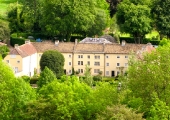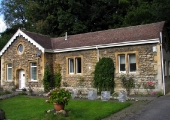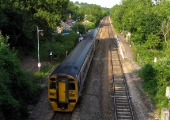.
Explore Avoncliff
Westwood and Winsley, Bradford on Avon, Wiltshire
.

.
The hamlet of Avoncliff is shared by the parishes of Westwood, on the southern side of the River Avon and Winsley on the northern. It lies in a narrow part of the gorge-like valley, where a weir provided power for mills on both sides. The river, the Kennet & Avon Canal and the railway are the most notable features.
It is named after the steep side of the Avon valley leading up to Westwood. It was first named, as Aveneclife, in the reign of King Henry II (1133-1189) and appears later in various forms, including Ankly, Anclift and Ancliff, showing that the pronunciation of Avon was like Welsh afon, not as modern “ayvon”. The name was used for the whole steep slope as far as the confluence of the Avon and the Frome. There was also a place name Avoncliff on the Winsley side, but further down the river.
A mill on the Westwood side was noted in the Domesday Book in 1086, paying 10 shillings a year and belonging to Winchester Cathedral, like the rest of the manor of Westwood. It was a grist (flour) mill for most of its existence, but was converted to fulling woollen cloth in 1763 and became the centre of a large factory at the end of the century.
The mill on the northern, Winsley, side might have been the second of the two mills in the manor of Bradford listed in Domesday Book, but this could equally have been at Limpley Stoke or in Bradford itself. A mill was certainly there in 1249 when a boy named David was killed by the wheel and a miller is mentioned in 1439. It had a changeable career in milling flour, making flock and shoddy from recycled clothing in tandem with the Westwood mill, making green colouring from chlorophyll and firelighters. Both mills have burnt down- Winsley in 1883 and completely rebuilt and Westwood in 1901 after which it was reduced from four floors to two.
.

Apart from the weir, the Westwood and Winsley sides are connected by the Kennet & Avon Canal’s Aqueduct, which was built in the 1790s to the design, like the rest of the canal, of John Rennie. The low central arch has sagged, but a reinforced concrete trough was made to hold the weight of water when the canal was restored in the 1980s.
.








